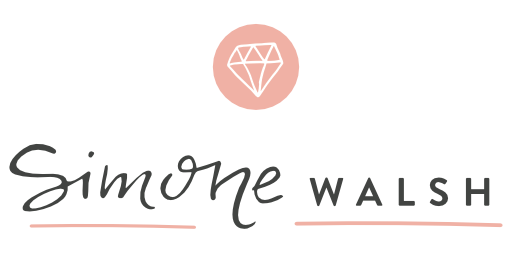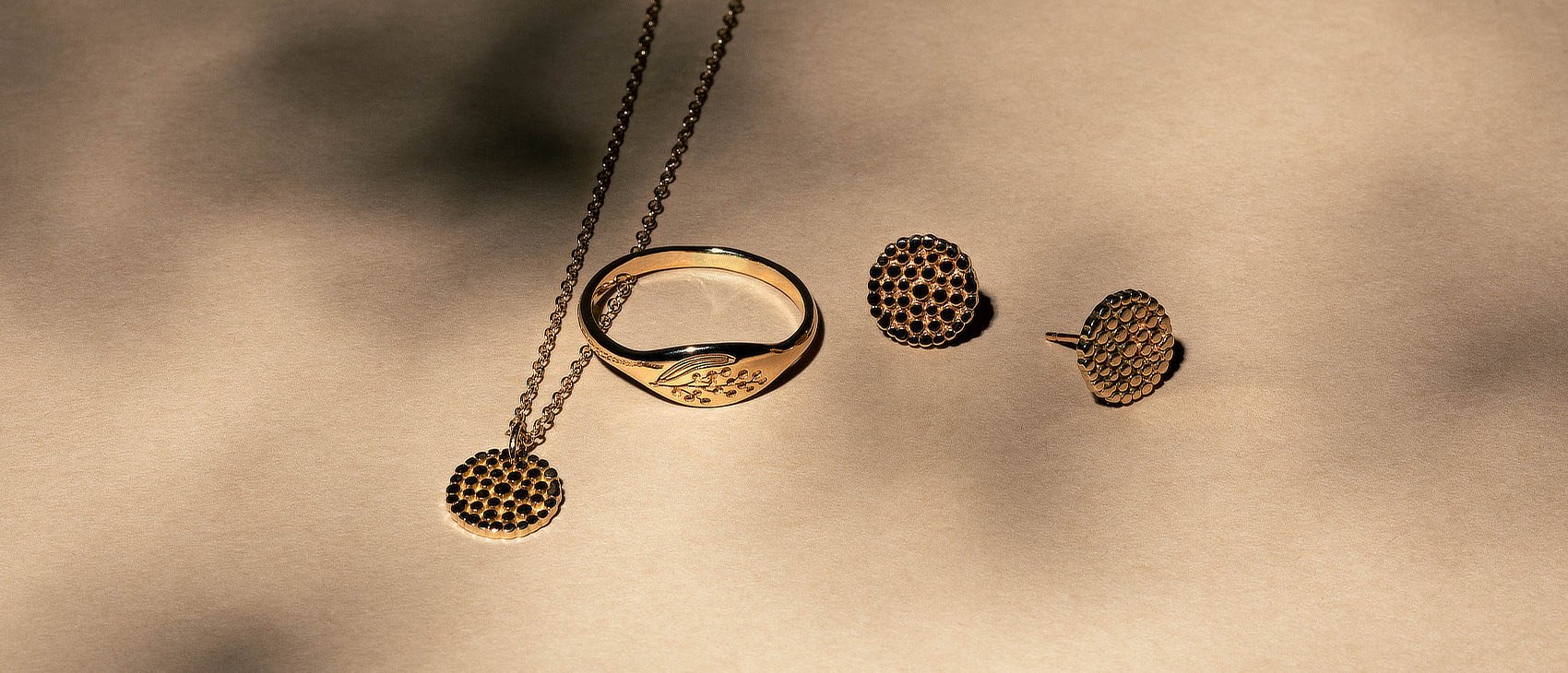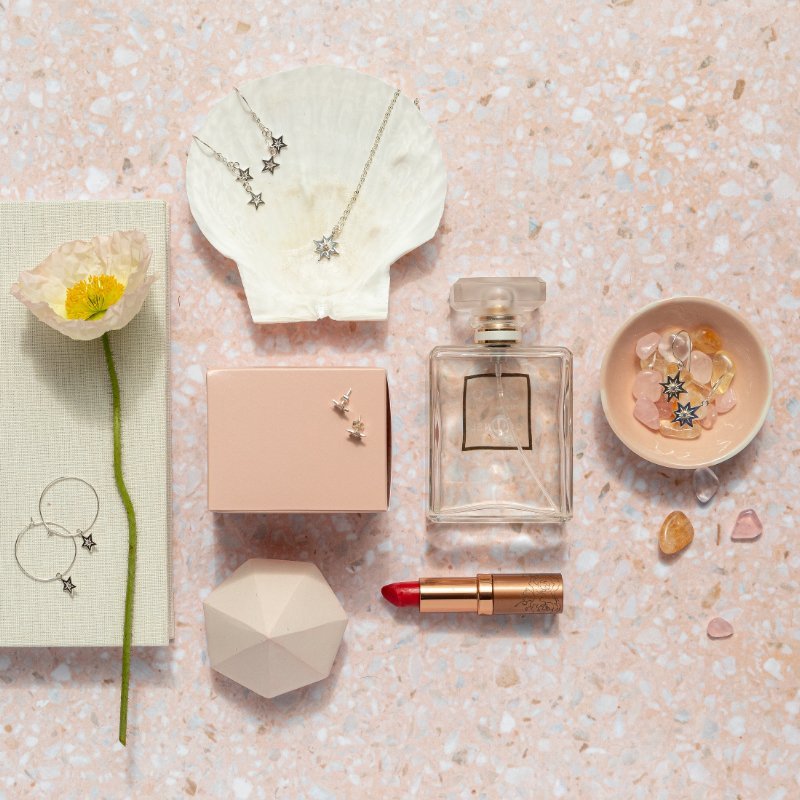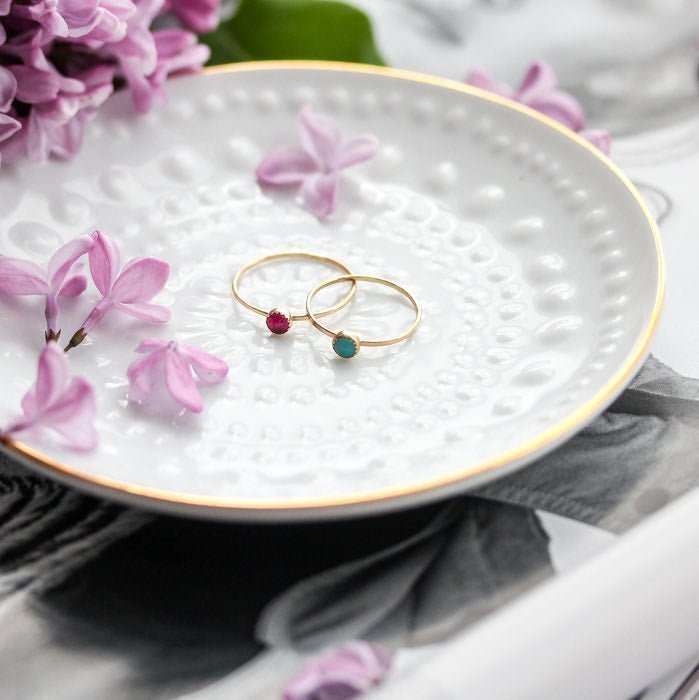 If you’ve ever found yourself puzzled by terms like solid gold, gold vermeil, gold filled, or gold plated while shopping for gold jewellery, you're not alone.
If you’ve ever found yourself puzzled by terms like solid gold, gold vermeil, gold filled, or gold plated while shopping for gold jewellery, you're not alone.
As a buyer, the jewellery world can easily feel like a maze of jargon. Understanding the differences between different types of gold really can make a big impact when choosing pieces that suit your style, budget, and lifestyle.
We’re here to break it all down for you with a clear and friendly guide to the different types of gold jewellery. You’ll learn not only what these terms mean but also the pros and cons of each type of gold.
Whether you're treating yourself or searching for the perfect gift, this guide will help you make an informed choice when shopping for jewellery in Australia or elsewhere.
Let's get started ...
Solid Gold
When it comes to gold, solid gold jewellery is the ultimate choice for durability, value, and timeless appeal.
However, 'solid gold' when it comes to jewellery almost never means pure gold. Pure gold (24ct / 24K) is quite soft, so it's typically alloyed with other metals to make it more durable for uses like jewellery.
You can learn much more about solid gold and which purity to choose in our comprehensive guide: All About Gold: Carats, Karats & Buying Tips. However, we'll give you a quick rundown below.
What is Solid Gold?
Solid gold jewellery (often described as 'real gold') is made from pure gold alloyed with other metals like silver, copper, or zinc.
The carat (ct) rating - also spelled karat (K) - indicates the purity of the gold: the higher the carat, the purer (and more expensive) the gold. Also, the higher the carat, the brighter the yellow colouring will be as it has more pure gold in it.
For example, 18ct gold is 75% pure gold, while 14ct gold contains 58.5% pure gold. We favour 14ct gold in our designs, striking a balance between durability, beauty, and value.
Different Colours of Solid Gold
- Yellow Gold: The classic gold hue, made by alloying pure gold with silver, copper and sometimes other metals.
- Rose Gold: A warm, pinkish to red tone created by adding more copper to the gold alloy.
- White Gold: A grey-yellow metal made by mixing gold with palladium or nickel and typically plated with rhodium for a whiter finish. We don't recommend white gold jewellery. If you love a silver tone, consider sterling silver jewellery instead.
Pros of Solid Gold Jewellery
- Highly valuable and retains value over time.
- Very durable and suitable for everyday wear.
- Resistant to tarnish and won't lost its gold colour.
- A classic investment piece that can be passed down through generations.
Cons of Solid Gold Jewellery
- Significantly more expensive than other gold alternatives.
- Not always necessary for fashion or wardrobe basic jewellery pieces.
In short, solid gold for jewellery is always a truly excellent choice - but it is pricey.
Given the expense of solid gold, you might wonder about more affordable alternatives. Alongside solid gold designs, we also have gold filled and gold vermeil jewellery designs: durable, everyday pieces that are more budget-friendly. Read on to understand what these solid gold alternatives are, along with the pros and cons.
Gold Vermeil Jewellery
Gold vermeil (pronounced 'ver-may') offers the look of gold, along with decent durability and value, but without the hefty price tag. You might also see it referred to as silver gilt or gilded silver.
The creation of gold vermeil involves a thick layer of gold (it should be at least 2.5 microns) over a base of sterling silver, making it a quality choice among plated gold options as it has a much thicker gold surface.
This is one of our favourite finishes to use in our Jewellery Shop Australia as an alternative to solid gold, along with gold filled.
Pros of Gold Vermeil Jewellery
- More affordable than solid gold while still offering a luxurious look.
- Uses only precious metals (gold and silver), adding to its value.
- Thicker gold layer compared to standard gold plating, offering greater durability.
- Perfect for achieving a solid gold look in more fashion-oriented pieces.
Cons of Gold Vermeil Jewellery
- It can tarnish due to the sterling silver content, but it's easy to clean. See our guide How to Properly Clean Silver Jewellery for tips.
- The gold layer can wear through over time, particularly on high-contact pieces like rings and bangles. However, you will at least be left with a piece of sterling silver jewellery.
For this reason, our gold rings are all made in solid gold, ensuring they maintain their beauty for years to come.
Related Reading
Learn about gold and more in these handy articles:
Gold Filled Jewellery
Gold filled jewellery involves mechanically bonding a thick layer of gold to a base metal (usually brass) under high pressure. It contains much more gold than gold plated jewellery and even gold vermeil, giving it better durability and longevity.
To be called 'gold filled' the gold must be no less than 1/20th by weight of the total metal content, which is why you might also see gold filled metal referred to as 1/20 gold. This finish is up to 10 times thicker than regular gold plated metal, making it a very durable alternative to solid gold.
Purities of 12ct, 14ct or 18ct gold will generally be used in this process. The most commonly used base metal core used is brass as the colour makes it less noticeable if the outer gold layer does eventually wear through.
Pros of Gold Filled Jewellery
- More affordable than solid gold, while offering a more durable finish than vermeil and especially gold plating.
- Good for people with metal sensitivities as the gold layer is much thicker, so skin is protected from the base metal interior.
- Suitable for everyday wear with proper care.
Cons of Gold Filled Jewellery
- Not as valuable or durable as solid gold.
- Can't be fully repaired if the gold layer wears through.
- Generally limited to mass-produced designs due to the specialised machinery required.
- It may be difficult to sell as scrap if needed.
Gold Plated Jewellery
Gold plated jewellery has a thin layer of gold applied to a base metal, often brass or copper, but often you won't have any idea of what metal has been used.
The gold is fused to the base metal using the process of electroplating, a process that uses electricity to cover one metal with a thin layer of another metal.Gold plated jewellery typically has a much thinner layer of gold than that of gold vermeil or gold filled jewellery. You'll sometimes see it referred to as flash plating, which is an especially thin version of plating.
Pros of Gold Plated Jewellery
- Very affordable.
- Can be suitable for trend-based or occasional jewellery pieces.
- The finish can sometimes be refreshed by re-plating, but cheap jewellery may not be worth the additional cost.
Cons of Gold Plated Jewellery
- The gold layer will off relatively quickly and easily, exposing the base metal underneath.
- Not ideal for everyday wear, especially in high-contact jewellery like rings or bracelets.
- Lower value due to the minimal gold content and non-precious base metals.
We really don't recommend buying gold plated jewellery. The plating can be so thin that all it takes is an eraser to remove the gold, so you can imagine how easily it will be removed through everyday wear and tear. You may be able to find a jeweller to repair this, but it will likely be more expensive than the piece is worth.
Also not knowing what base metal is under the plating is problematic, especially when the plating wears through. For instance, it might contain nickel, which is toxic and easily causes allergies. Or it could be brass, which will turn your skin green and potentially corrode. Gold plated jewellery is cheap, but the savings aren't worth it.
(Reading this on a website that isn't simonewalsh.com? Be aware that the content has been stolen, infringing the copyright of a small business. ABN: 65108844126)
Choosing the Right Type of Gold Jewellery for You
Your choice of gold jewellery depends on your budget, how often you plan to wear the piece, and whether it's intended as a long-term investment or a fashion piece. If you're looking for heirloom-quality or sentimental pieces, solid gold jewellery is a fantastic choice.
For fashionable yet durable options, consider gold vermeil or gold filled jewellery.
Read more about How to Choose the Best Gold Jewellery, including how to style gold and how to choose gifts.
Ready for New Jewellery?
Understanding the different types of gold jewellery can help you make smarter choices when shopping. Whether you prefer the luxury of solid gold, the balance of quality and affordability in gold vermeil and gold filled jewellery, or the accessibility of gold plated pieces, there’s something for every taste and budget.
At Simone Walsh Jewellery, we offer a curated selection of gold jewellery, including gold necklaces, gold earrings, and solid gold rings. Explore our collections and find the perfect piece to add a touch of gold to your everyday style.
Related Reading:
- About gold - Wikipedia
- Silver gilt (also known as gold vermeil) - Wikipedia
- Gold filled - Wikipedia
- Gold plating - Wikipedia






 Simone Walsh is a
Simone Walsh is a 
